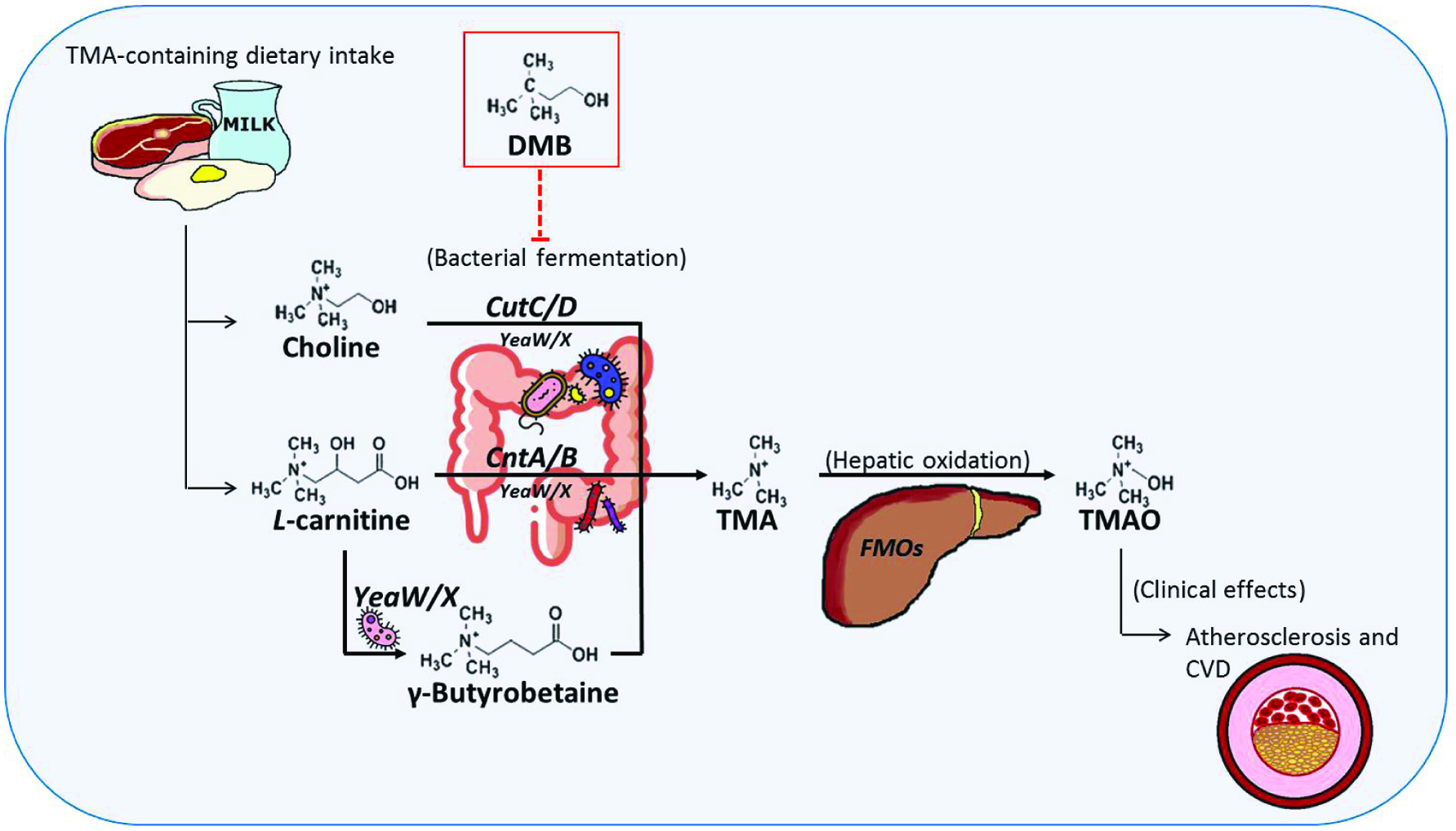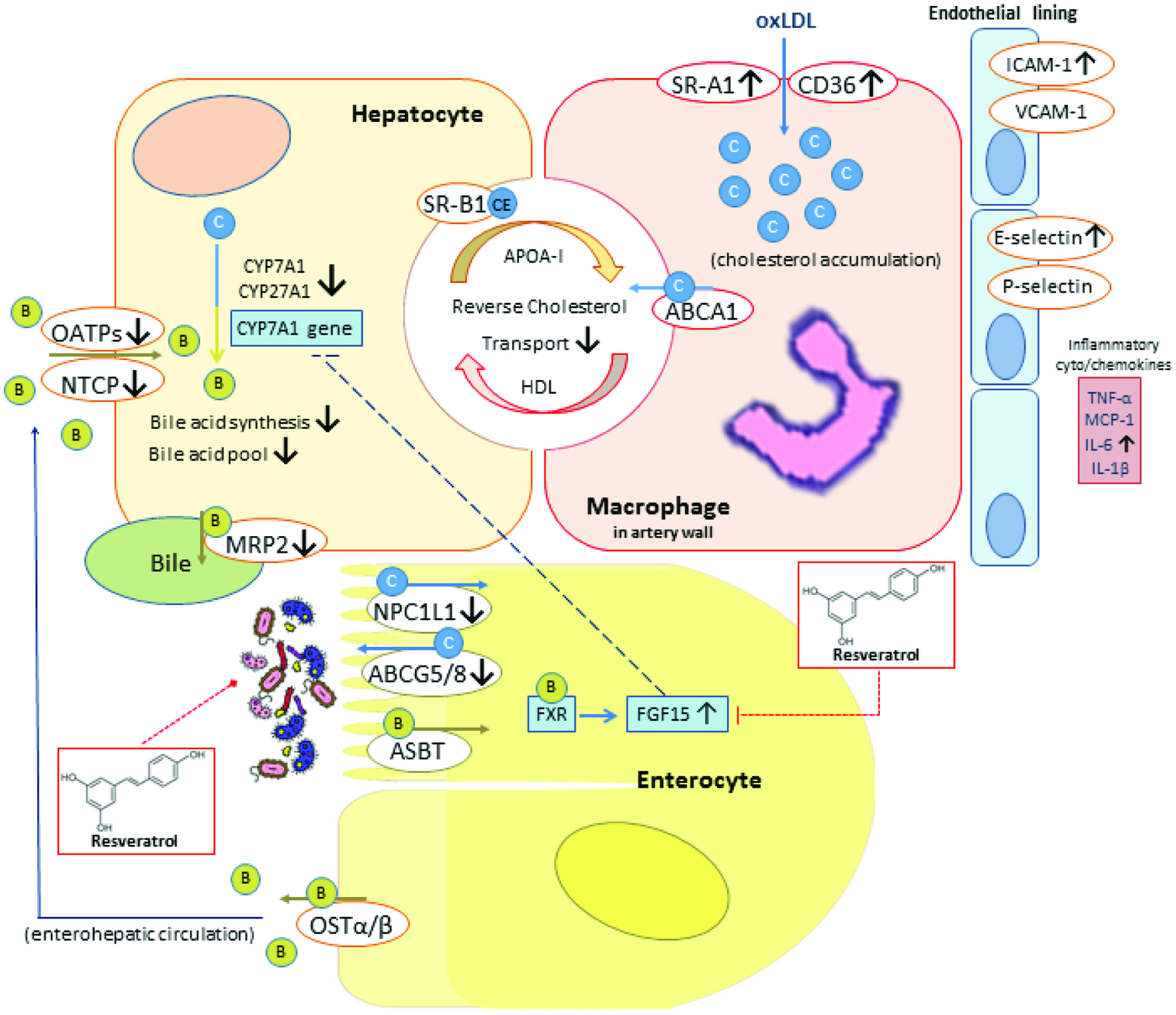
Figure 1.
Biosynthesis of gut microbiota-dependent metabolites and atherosclerosis and the effects of DMB.
TMA-containing nutrients (L-carnitine and choline) are source of TMAO. Unabsorbed L-carnitine and choline are first metabolized to TMA by distinct gut flora enzymes, CntA/B (Zhu et al. 2014) and CutC/D (Craciun and Balskus 2012), respectively. γ-Butyrobetaine is produced as an intermediate metabolite from L-carnitine by microbial enzyme YeaW/X and then into TMA. Study also suggested that YeaW/X can catalyze TMA formation from multiple TMA-containing compounds (Koeth et al. 2014). TMA is subsequently metabolized by host hepatic phase I enzyme FMOs to TMAO. TMAO is identified to promote and accelerate atherosclerosis progression and cause CVD. DMB, an analogue of choline, reported to reorganize gut microbial community and inhibit some TMA lyase activity (Wang et al. 2015). TMA: trimethylamine; TMAO: trimethylamine-N-oxide; FMOs: flavin monooxygenases; CVD: cardiovascular disease; DMB: 3,3-dimethyl-1-butanol.